There was a time when fresh ginger was hard to find in supermarkets but no more! It's now widely available in many forms -- fresh, dried, pickled, and preserved. But how do select ginger and how to use it well? This quick guide explains the interesting range of gingery flavors, the differences between different kinds of fresh ginger (mature vs. young!), pickled ginger options, plus dried and preserved ginger. Ginger up your life with lots of gingery excitement. It's loaded with flavor and phytochemicals to help digestion so it's hard to ever have enough. It's better to eat ginger for its healthful benefits than to take supplements, which may be so intense that it has an adverse effect.
Ginger flavor range
Try enough ginger and you'll note a range of flavors, from lemony and camphorous to delicate. Variety impacts that to a certain extent, but non-volatile compounds, primarily gingerols, zingerone, and shogoals, define the rhizome's distinctive bite. Fresh ginger contains all three, but gingerols, which are chemically related to chile's capsaicin and black pepper's piperine, dominate.
Cooking ginger softens and transforms some gingerols and shogoals into zingerone, which has a sweet, milder bite. Drying ginger dehydrates gingerols, turning them into shogoals, which is twice as pungent (why ground ginger is intense!). Keep these factors in mind as you source and cook with different kinds of ginger.
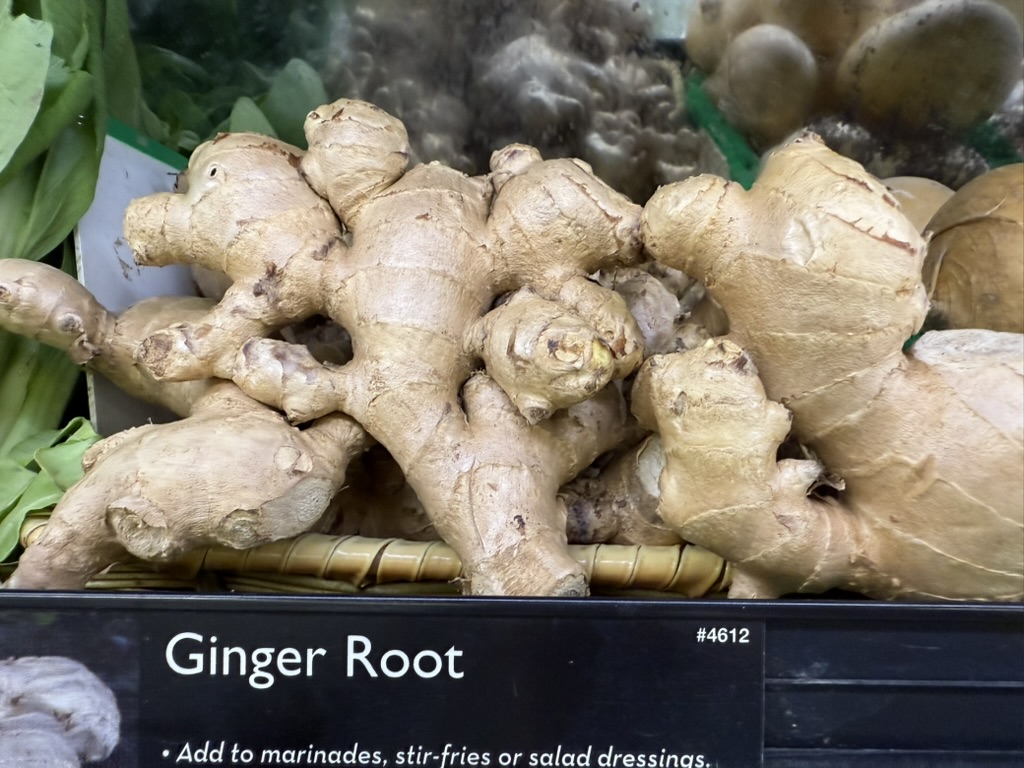
Fresh (mature) ginger
Mature ginger is what people mostly use in cooking. It is handiest to keep on hand. Its tough tan skin signals mature "old" ginger with pep at full throttle.
How to wisely choose ginger? Choose plump, heavy hands with few small fingers to minimize prep. Conventionally grown ginger is often chubbier and easier to work with than smaller organic ginger. "Hands" of ginger (that's what they're called) that have broken off knobs are ok because you're likely to be buying the chubbier (easier to prep) sections! The ginger below is imperfect to some people but perfect for me, a lazy cook who's looking for a lot of ginger for dishes like Cambodian gingery chicken stir-fry and gingery salad dressing.
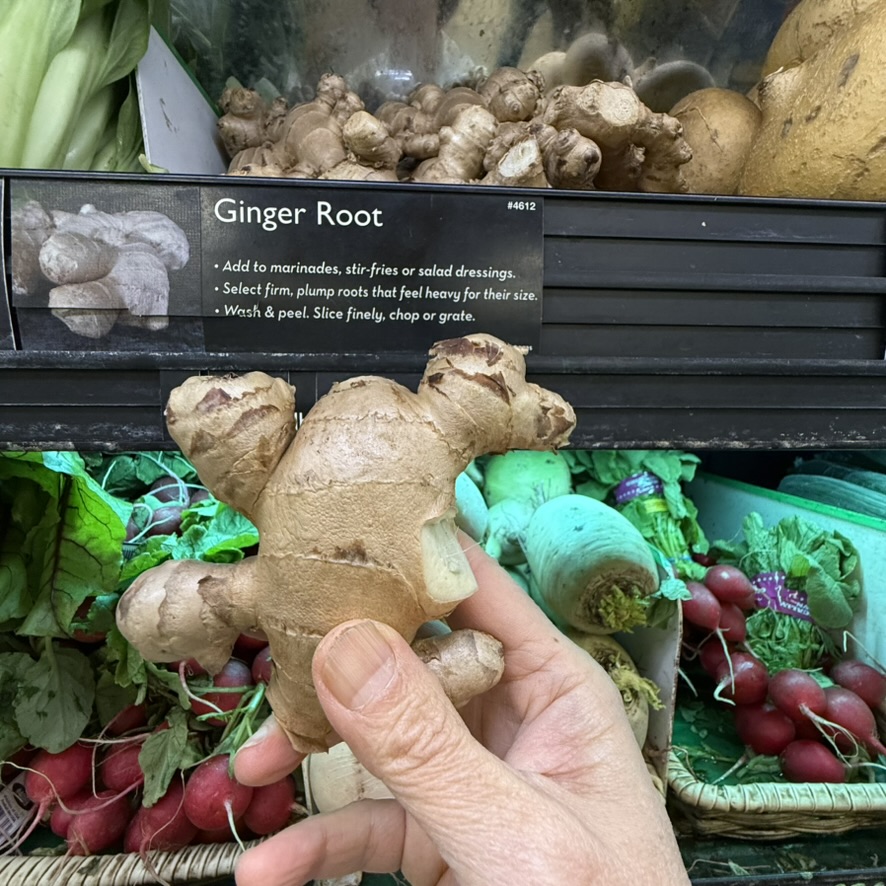
Mature ginger peeling tips
To easily peel, break off biggish ginger fingers, and use a swivel peeler (or sharp-edged metal spoon) on the main bulbous stem; wield a knife to cut off the skin from smaller pieces. A knob of peeled ginger kept in the fridge saves prep time. To peel ginger, I favor a trustee OXO Good Grips peeler.
Ginger storage tips
Trim any moldy areas and store unpeeled ginger in a zip-top bag in the crisper, where it will last for months. If mold develops, cut it off. To keep ginger for longer, cut it into 1-inch sections and freeze on a sheet pan then transfer to a zip-top bag; peel the ginger before freezing to cut down prep. I suggest not cutting ginger more before freezing, or it loses its potency.
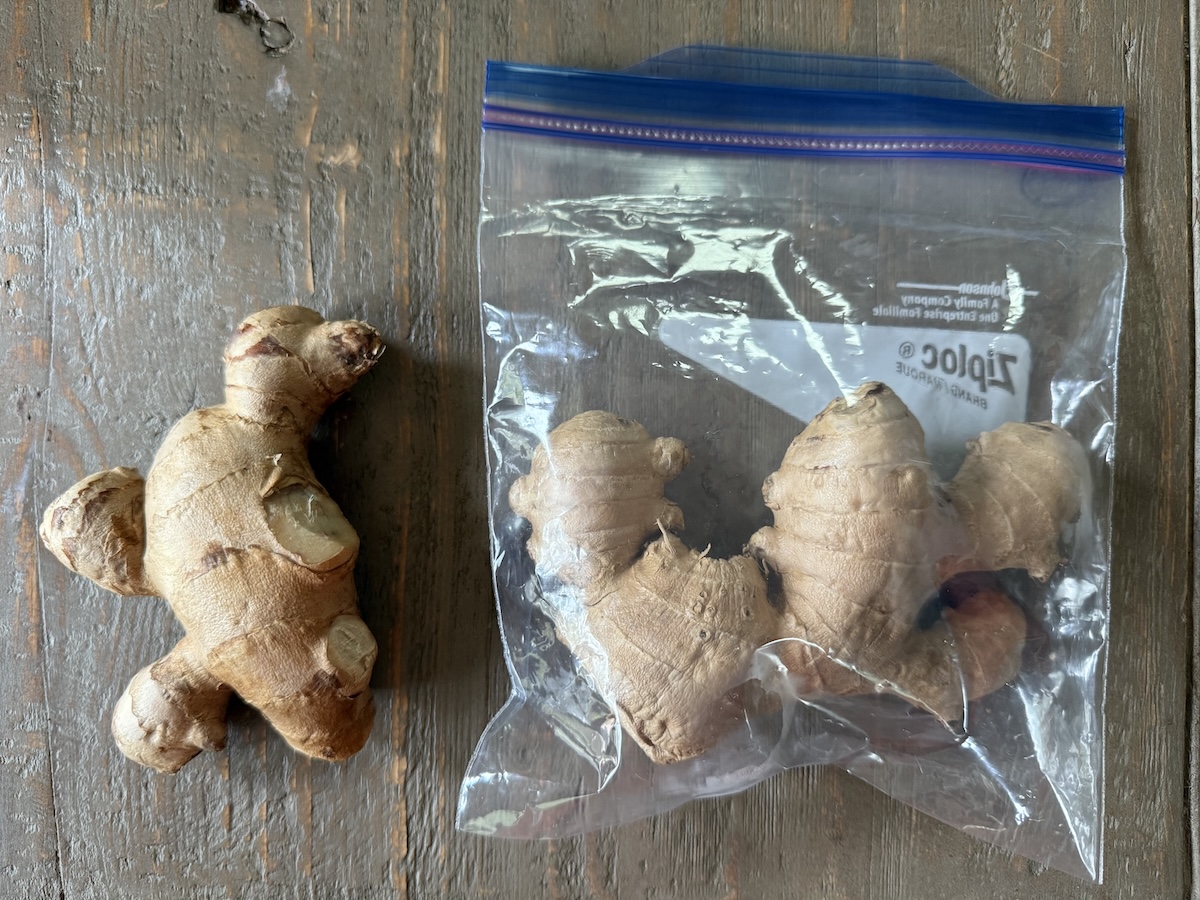
Young (baby) ginger
appears at East Asian markets in early spring (April and May) and late summer into early fall (September and October). Compared to old ginger, young ginger is about 50 percent milder and less fibrous. Its gossamer skin and pinkish 'blushing' tips do not require peeling; just rub off any loose skin and prep away for dishes like a gingery noodle stir-fry. Young ginger is often used for pickled ginger. It may also be eaten raw as an accompaniment to certain Thai sausages.
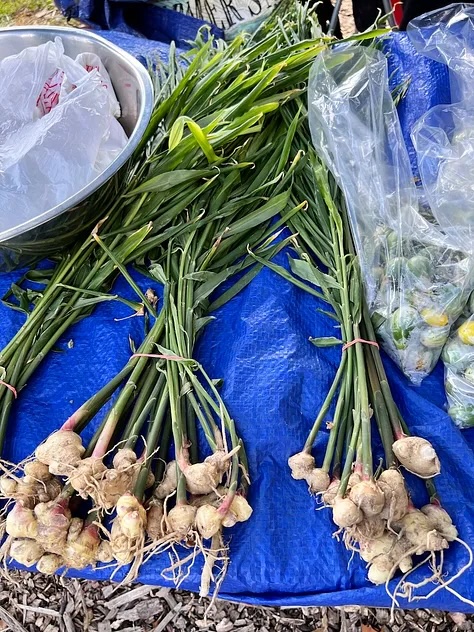
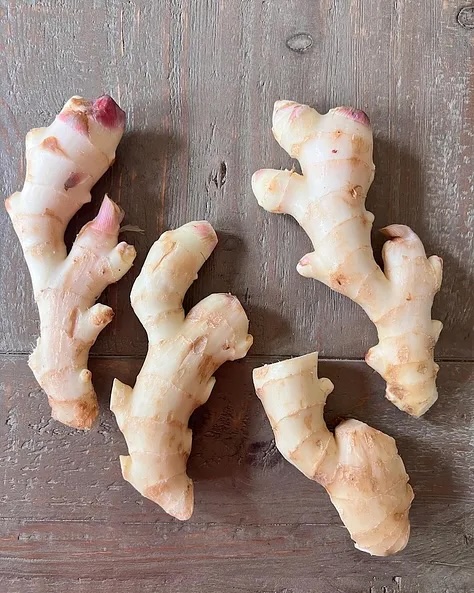
Pickled ginger
Spicy, tangy pickled ginger is not only for sushi. It can be added to stir-fries and salad, for example. Most people gravitate toward Japanese-style gari (pickled ginger), which is delicately tangy and mildly hot - perfect for sushi and sometimes sashimi; deep red, julienned beni shoga is pickled with plum vinegar and has an assertive flavor that pairs well with hearty yakisoba noodles, takoyaki, okonomiyaki and curry fried rice. Pickled ginger keeps well in the fridge for a very long time.
Commercially made pickled ginger is overly sweet with little gingery bite. Because homemade pickled ginger (gari) lasts so long, I make a batch of gari every other other year from this recipe (pictured below, on right). It's easy to buy pickled ginger but it never has as much nuance.
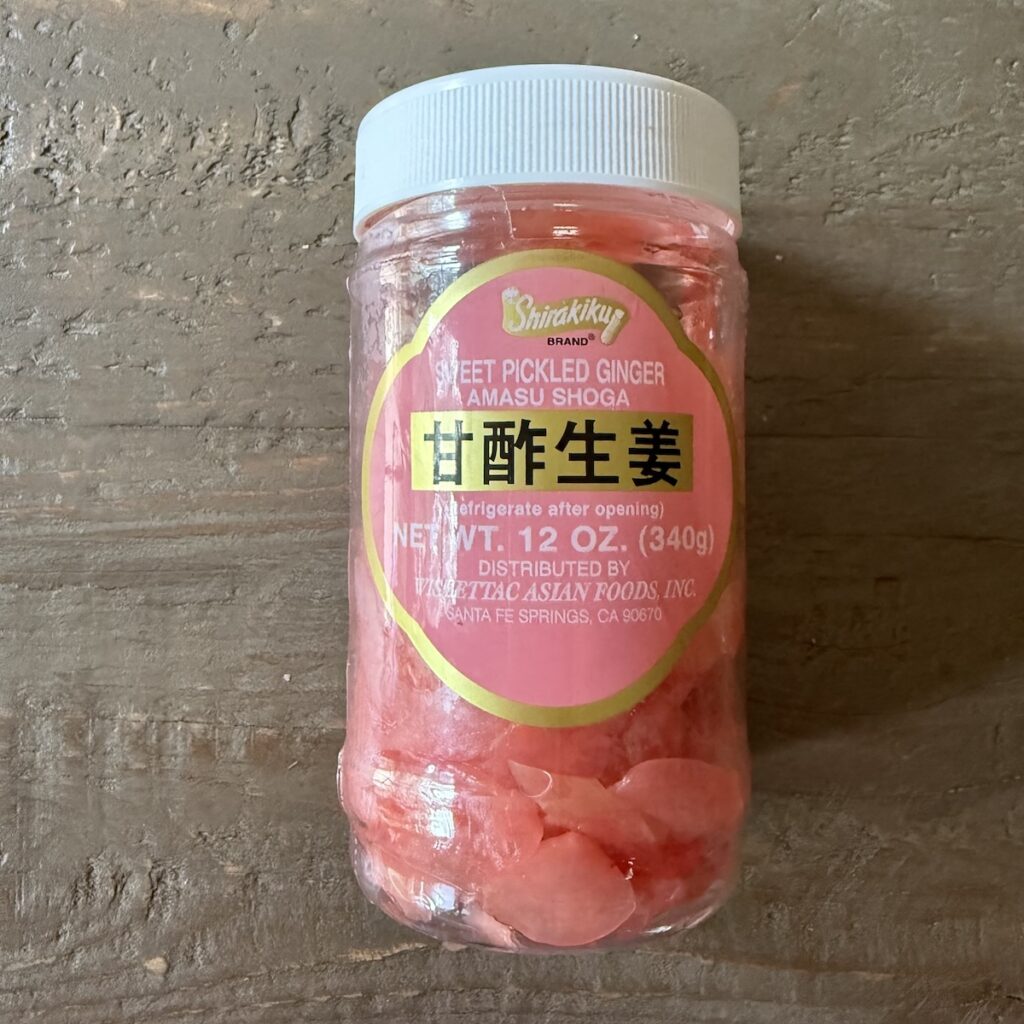
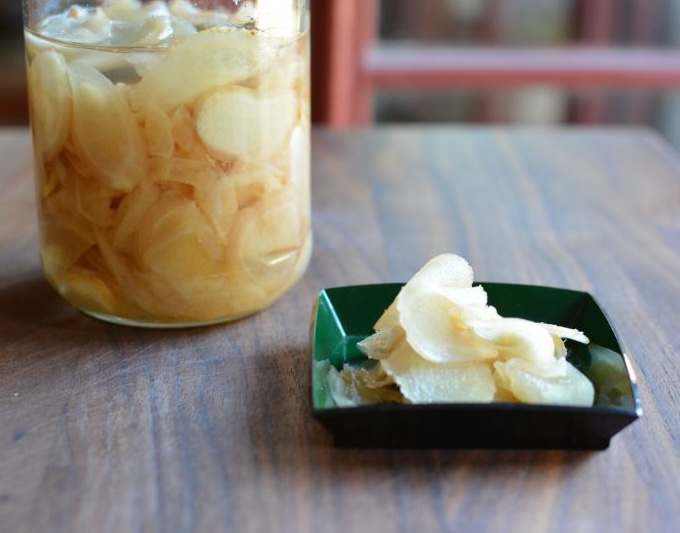
Ground ginger
Pale ground lends deep pungent notes to define treats like gingerbread. Excellent ground ginger, like Buffalo ginger imported by Burlap and Barrel, has sensational aroma, deep heat, and a slightly sweet finish. To help with my acid reflux, I drink a daily cup of ground ginger and turmeric tea.
Can you substitute ground for fresh ginger? Not really. Adding it to a stir-fry, for example, won't yield the same results as fresh ginger. However, for a casual marinade or a pot of beans, go ahead, though proceed with caution because ground ginger packs a punch.
Candied (crystalized) ginger
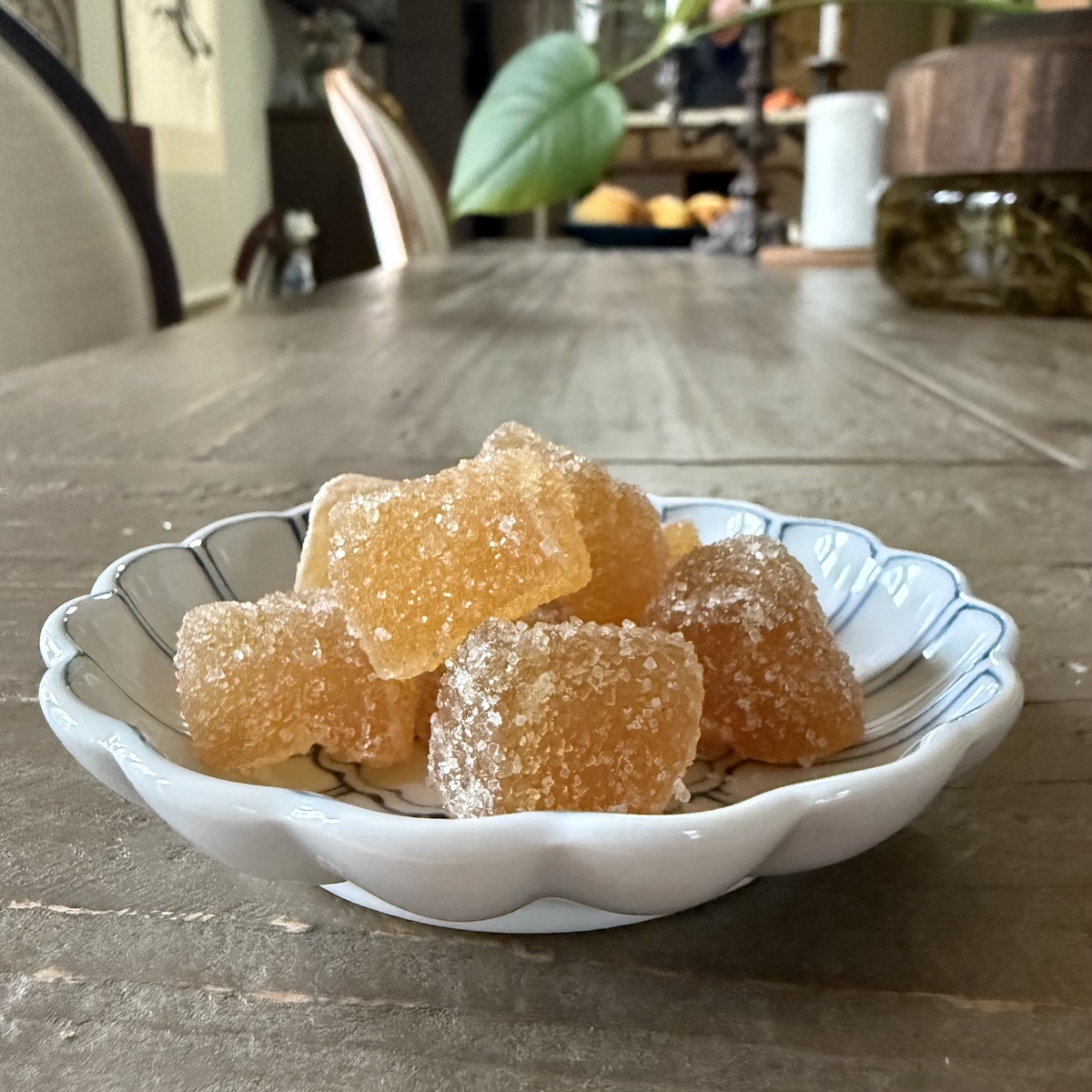
Lends hot sweet, chewy pleasure to many treats. You can also just nibble on a piece as an after meal digestive. Sliced candied ginger tends to be drier than candied chunks, like above. Candied ginger keeps for years, if stored in an airtight container. I love to use fresh, ground and candied ginger for a delightful triple ginger cookie, stir it into ice cream as it finishes churning, and also to just nibble on it.
These are the most common gingery options available to cooks. There's so much to explore in the world of ginger root. What kind do you like to use most?



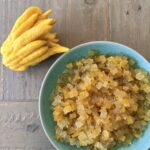

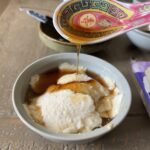

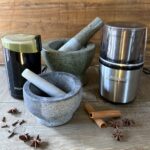


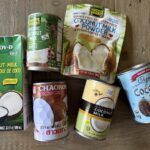
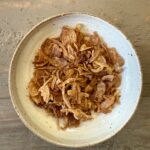
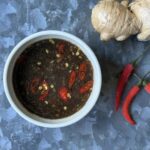

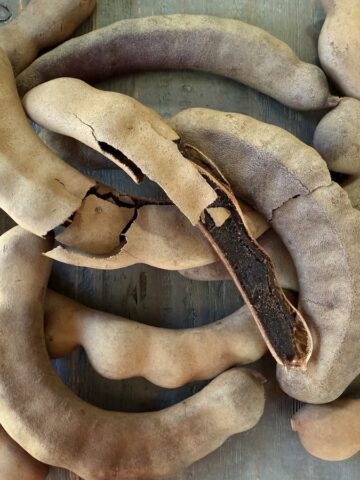


Leave a Reply